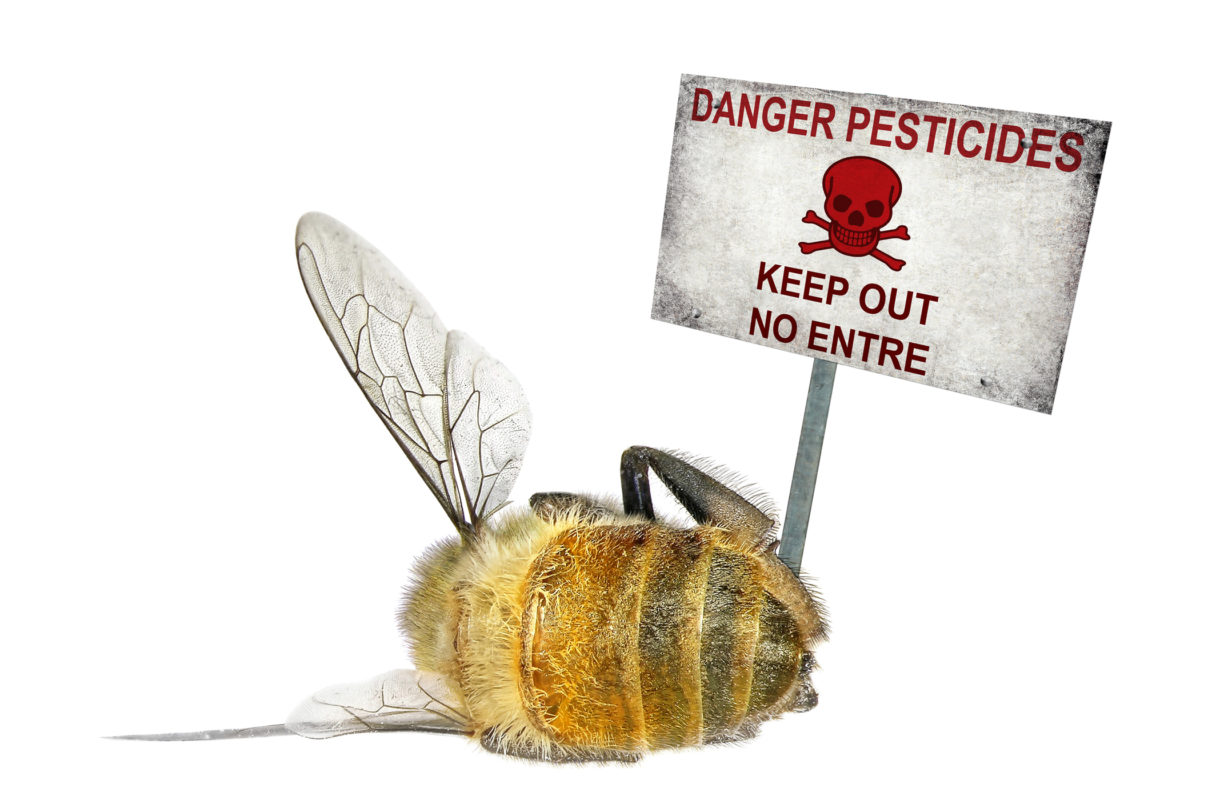Pesticides
One of the most horrifying sites a beekeeper can face is to find a once thriving colony debilitated or killed by exposure to pesticides. The telltale sign of a pesticide kill is what looks like a “carpet” of dead bees in front of the entrance. Sometimes, in the worst kills, the affected bees die off so quickly that the hive cannot even deal with the die-off, and a pile of dead bees accumulates at the bottom of the hive or right at the entrance.
Pesticide kills are not unique to any specific kind of beekeeper. Hobbyist and backyard beekeepers can suffer from kills when nearby neighbors apply insecticides to their flower or vegetable gardens. Commercial beekeepers suffer when pesticides are applied to nearby crops. Even commercial beekeepers that keep their bees in organic farms or groves or away from spray zones can still be affected when a nearby commercial farm sprays crops that are close enough for the bees to reach by their normal foraging. And, all beekeepers can be affected if toxins enter a water source from which the bees are drinking.
When foragers carry pesticide-laden pollen or nectar back to the hive, disaster ensues. Depending on the dosage, bees become sick or die. If the exposure is severe enough, not only is the colony of bees lost, but also the honeycomb becomes contaminated and needs to be disposed of.
It is never a wise decision to reuse contaminated equipment. After such a kill, a conscientious beekeeper should eliminate any affected honeycomb, lest it be accidentally transferred to a healthy colony and cause more unnecessary damage. The beekeeper also needs to consider whether he or she can prevent this from happening again. If not, then the apiary may not be worth keeping, and it may be necessary to move on to another safer location.





